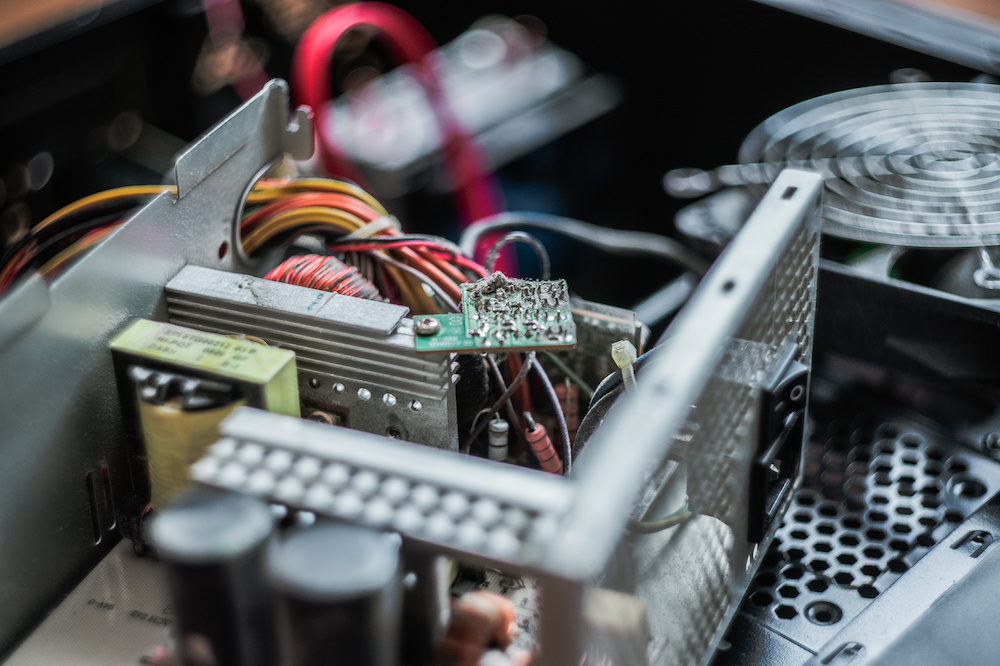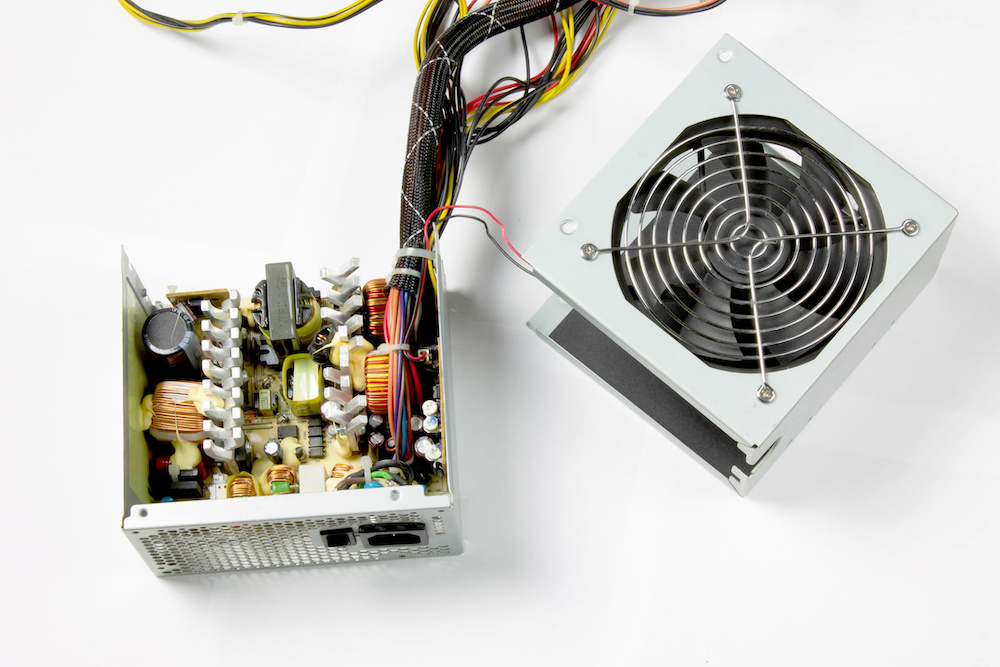How To Tell if Power Supply Is Bad or Motherboard Is Defective
We may earn a commission for purchases using our links. As an Amazon Associate, we earn from qualifying purchases.
Your desktop system can be a complicated piece of electronic equipment, especially if you don't understand its hardware functions.
There's a lot that may go wrong.
There's also no surefire method to figure out which hardware is to blame without putting in some effort and being resourceful.
It's common to ask how to tell if power supply is bad or motherboard is defective because these parts are usually suspected whenever a PC malfunctions.
Let's check out their common symptoms of being faulty as well as other related topics.
What Are the Indicators of a Bad PSU?
Before we enumerate the symptoms of a faulty power supply, let's see its importance to your desktop.
The power supply is among the components that are necessary for a computer to function.
It is the metal box normally placed in one of the case's corners.
The power supply transforms your home's alternating current line to the direct current required by your computer.
Since it houses the power cord connector and the cooling fan, the power supply is visible from the rear of most desktop casings.
A computer is utterly unusable if it is not installed correctly in the internal part of your system.
Regarding a failing PSU, the signs and symptoms of a faulty power supply can be highly varied.
Screen abnormalities and video crashes can be caused by a lack of power to a video card and that is the last thing you want to experience when gaming.
On the other hand, a lack of power to a hard drive can resemble the symptoms of faulty sectors or a virus infection.
If a slew of unconnected issues suddenly besets your computer, and you've ruled out malware and other typical culprits, the power supply may be failing.
Let's explore the symptoms in detail.
ALSO READ: How To Test a Motherboard
Unstable Output
A desktop system that doesn't function consistently, which usually leads to shutdowns or no display, could indicate power issues.
Since many various reasons can cause random failures and crashes, this can be difficult to detect.
If you've ruled out software issues, defective hard disk sectors, and a virus, a power supply failure could be the cause of the crashes.
If the crashes seem to happen regularly when using a high-specs CPU or while playing graphics-heavy games, this is a good indicator of a PSU issue.
PC Stays Off
As mentioned above, the PSU is the primary source of electricity for any desktop computer.
Any issues with this component could easily result in your PC failing to start.
Still, boot-up issues aren't necessarily attributed to a failing power supply alone.
Other desktop components, such as the AVR and power connectors, may also be malfunctioning.
Check if you hear any beeps or clicks when you press the power button.
If you fail to hear any, there's a good chance that you have a bad PSU.
Noise and Smell Issues
Usual power supply failures may result in insufficient electrical power to crucial components.
However, major PSU issues might be evident by the behavior of other components.
Listen closely to the noise that the system produces and confirm if it doesn't sound normal.
If the power supply fan suddenly becomes louder than usual, it might be that the PSU may be on its last legs.
If you smell something unpleasant or burning, turn off the computer right away.
A faulty power supply could lead to an electrical fire if it's not repaired or replaced.
Sudden Freeze
Your computer may freeze suddenly at any point without any warning or notification.
It could be due to a surge in voltage from the power supply.
Once you are experiencing sudden surges from your PSU, it's a good indication that you should start looking for a new power supply.
You may usually avoid problems in the future by selecting a high-quality PSU for your valued desktop system.
However, this symptom is attributed more to a faulty motherboard, hard drive, or RAM stick.
PC Automatically Reboots
Regardless of when the PC is on, whether during the boot process or while you are doing your tasks, your PC may restart by itself.
Sometimes, this issue is a result of a failing PSU.
When your system consumes lots of power, such as playing a game or editing a high-quality video, failure to get the necessary power could result in a reboot.
Similar to the sudden freeze, a random reboot could be a symptom of a bad motherboard, memory, or processor.
With these possibilities, it would be careless to assume that it is just because of a faulty PSU.

What Are the Indicators of a Bad Motherboard?
Before we check out the possible signs of a faulty mobo, let's determine its role in our desktop PCs.
The motherboard is one of the most vital and irreplaceable parts of a computer.
This component allows communication between each chip, port, and slot.
The processor and the GPU, two of the most expensive and important components, are mounted to the motherboard.
Other parts such as disk drives, RAM, network card, USB slots, and others are all connected via the motherboard, including the processor and GPU.
Overall, it's important because it connects all the components to form a functional system.
Any damage to the motherboards could pose a significant problem that could render the computer unusable.
Blue Screen of Death (BSOD)
Whenever a Windows OS encounters a "STOP Error," a blue screen is displayed.
This error leads to the crash and failure of the operating system.
It is colloquially called the "Blue Screen of Death" because there's no way to get back to what you are doing once it appears.
Your only option is to restart Windows manually.
This failure usually leads to loss of unsaved data, as applications didn't have the chance to save the data you are working on.
On a blue screen, the system creates a "minidump" file automatically that contains crash information and stores it in your drive.
Depending on which version you are on, the blue screen has a distinct appearance.
The blue screen looked much like a terminal screen with all sorts of information on Windows 7 and previous versions.
On Windows 8 and 10, the display is simpler and uses a lighter shade of blue.
This particular error could be a result of a failing motherboard or corrupted drivers.
Other hardware failures can also be the cause.
You can write or save the error code indicated.
Once you get it, search online for the meaning of the code to determine if the mobo is the reason for the occurrence of the blue screen.
Power-On Self Test (POST) Failure
The POST is a diagnostics application integrated into the computer's hardware, which tests several hardware components before the machine boots.
This sequence is not exclusive to Windows.
Most POST sequences monitor important hardware components, including power supply, ram, and system bus.
However, the specific checks conducted may differ depending on the operating system.
If one of these tests fails, an error prompt will appear in the POST process.
You can see the message on the screen or in the form of beeps or blinking lights.
In desktop PCs, the BIOS information screen always displays any POST failures.
These errors include displaying the number 08 indicating defective memory or a system warning like "NT boot loader missing."
A faulty mobo is among the usual suspects whenever you encounter this error.
Like other indicators, though, it would still be better to check out your other components before assuming that it is the reason.
No Power
While this error is mainly associated with a bad PSU, there are circumstances where your motherboard is the one at fault.
It is also possible that the PSU inadvertently damaged the mobo by a sudden surge, which caused its connectors to be corrupted.
Peripherals Not Recognized
This symptom is a bit tricky because there are tons of reasons why your computer doesn't recognize your output devices.
It can begin by not being readable on a flash drive, which we most likely assume is due to a faulty USB.
In some instances, other components may not be recognized, such as your mouse, network card, or speaker.
Usually, we assume that these failures are a result of the broken hardware themselves.
It could also be a sign that the motherboard is malfunctioning.
To get a better idea if your mobo is the culprit, you should consider testing those unrecognized devices on a healthy PC.
You can also check the functionality of your motherboard to see if it functions the right way.
RELATED: How To Tell if Motherboard Is Dead (Guide)
How To Tell if Power Supply Is Bad or Motherboard Is Defective: In Conclusion
Once you know how to tell if power supply is bad or motherboard is defective, your next course of action is straightforward.
You can either send it to the manufacturer provided that it is still under warranty.
Otherwise, purchase a new PSU or motherboard with better quality.
Repairing these faulty components by yourself is not suggested, even if you know how.
It will take time, resources, and equipment that you may not have.
Save yourself the hassle and start checking out the best available components on the market.

